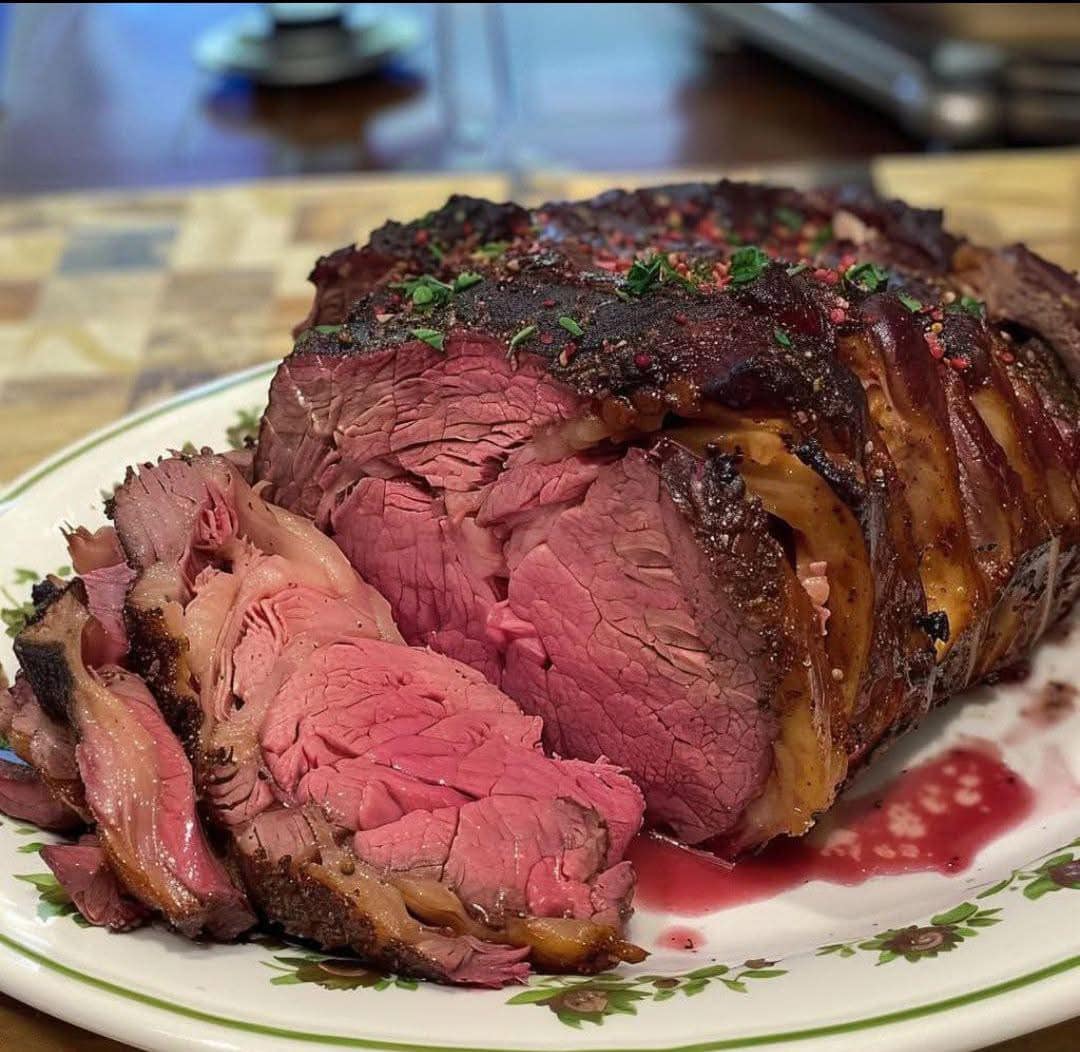ADVERTISEMENT
### Instructions:
#### Step 1: Preheat the Oven
Preheat your oven to **275°F (135°C)**. A lower temperature is key to ensuring that the roast cooks evenly and becomes tender.
#### Step 2: Prepare the Roast
Pat the **chuck roast** dry with paper towels to remove any excess moisture. This will help create a crisp exterior when roasting. Rub the **olive oil** all over the roast to create a coating for the seasoning to stick to.
In a small bowl, combine the **garlic**, **rosemary**, **thyme**, **salt**, **pepper**, **onion powder**, **paprika**, and **ground mustard**. Rub this seasoning mixture all over the roast, making sure to cover every surface evenly. For an extra flavor boost, you can also drizzle the roast with **Worcestershire sauce** before seasoning.
#### Step 3: Sear the Roast (Optional but Recommended)
While searing is optional, it adds an extra layer of flavor and helps lock in the juices. In a large skillet, heat about **1 tablespoon of olive oil** over medium-high heat. Once the oil is hot, sear the roast on all sides for **2 to 3 minutes** per side, until a brown crust forms. This will give the roast a more complex flavor and make it even more appetizing when it’s done cooking.
#### Step 4: Roast the Meat
Place the seared chuck roast on a **rack** inside a roasting pan. Add the **beef broth** to the bottom of the pan to provide moisture during the roasting process. This will help prevent the roast from drying out and create a flavorful base for au jus.
Roast the meat in the preheated oven for **2.5 to 3 hours**, depending on the size of the roast. The goal is to cook the meat until it reaches your desired doneness. For medium-rare, aim for an internal temperature of **125°F to 130°F (52°C to 54°C)**. For medium, aim for **135°F to 140°F (57°C to 60°C)**. You can use a **meat thermometer** to check the temperature, making sure not to overcook the roast.
#### Step 5: Rest the Roast
Once the roast reaches your desired level of doneness, remove it from the oven and tent it with **aluminum foil**. Let the roast rest for **15 to 20 minutes** before slicing. Resting allows the juices to redistribute within the meat, ensuring that it stays moist and tender.
#### Step 6: Slice and Serve
After resting, slice the Poor Man’s Prime Rib against the grain into **1/4 to 1/2-inch slices**. Serve with your favorite sides, such as mashed potatoes, roasted vegetables, or a classic au jus for dipping.
### Optional Au Jus:
For a flavorful au jus, use the drippings from the roasting pan. Place the pan on the stovetop over medium heat and bring the broth to a simmer. Scrape up any browned bits from the bottom of the pan and let the liquid reduce slightly. Serve the au jus alongside the roast for dipping.
## Tips for Success
1. **Low and Slow Cooking**: The key to achieving a tender, flavorful Poor Man’s Prime Rib is cooking the roast at a low temperature for an extended period. Avoid rushing the process by increasing the oven temperature, as this could result in a dry roast.
2. **Use a Meat Thermometer**: To
ensure your roast is cooked to the perfect level of doneness, use a meat thermometer. It’s the most reliable way to achieve the exact results you want.
3. **Resting Is Crucial**: Letting the roast rest before slicing is essential for maintaining its juiciness. Don’t skip this step!
4. **Customize the Seasoning**: Feel free to adjust the seasoning to your taste. Add more garlic, herbs, or spices as desired.
## Conclusion: A Budget-Friendly Feast
**Poor Man’s Prime Rib** offers a way to enjoy the flavors of a prime rib roast without the high cost. By using a more affordable cut of beef, such as a chuck roast, and employing a slow-roasting technique, this dish delivers tender, flavorful results that will satisfy any meat lover. Whether you’re preparing it for a family dinner, a special occasion, or just as a treat for yourself, Poor Man’s Prime Rib proves that you don’t need to spend a fortune to enjoy a luxurious, mouthwatering meal.
